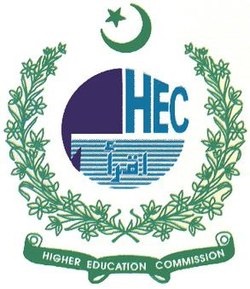Socio-Economic Factors and Subjective Well-Being Among Women of Reproductive Age: A Secondary Analysis of Punjab
DOI:
https://doi.org/10.61506/01.00143Keywords:
socio-economic factors, subjective well-being, womenAbstract
Subjective Well-Being (SWB) of women in Punjab, Pakistan is remained an unattended topic of research since the independence. SWB is a multidimensional phenomenon and based upon numerous socioeconomic factors. These factors differ grounded on geographical split-ups, culture and societal traditions. In countries like Pakistan, evaluation of SWB of women involves many complexities. In this study, the first ever data collected on this subject via Multiple Indicator Cluster Survey (MICS) -2014 is utilized for statistical modeling of SWB of women for age bracket 15-24 years. The Multiple Regression Modeling technique is used in which SWB of women is taken as response variable along with relevant socioeconomic factors such as age, marital status, economic status, employment, and access to mass media etc. as predictors. The finalized model suggests a positive relationship of SWB of women with age, use of internet, watching T.V. and negative with a number of household members and employment status. While, women belonging to poor economic status are more satisfied than that of moderate and rich class. In region wise comparison, women living in southern Punjab have better SWB as compare to northern and central region of the Punjab.
References
Clark, A. E. and Oswald, A. J. (2002). A simple statistical method for measuring how life events affect happiness. International Journal of Epidemiology, 31, 1139-1144. DOI: https://doi.org/10.1093/ije/31.6.1139
Deaton, A. (2008). Income, Health, and Well-Being around the World: Evidence from the Gallup World Poll, Journal of Economic Perspectives, 22(2), 53–72. DOI: https://doi.org/10.1257/jep.22.2.53
Diener, E. and Suh, E. (1997). Measuring Quality of Life: Economic, Social, and Subjective Indicators. Social Indicators Research, 40, 189–216. DOI: https://doi.org/10.1023/A:1006859511756
Diener, E., Diener, M. and Diener, C. (1995). Factors predicting the subjective well-being of nations. Journal of Personality and Social Psychology 69(5), 851–864. DOI: https://doi.org/10.1037//0022-3514.69.5.851
Diener, E., Wolsic, B. and Fujita, F. (1995). Physical Attractiveness and Subjective Weil-Being. Journal of Personality and Social Psychology, 69(1), 120-129 DOI: https://doi.org/10.1037//0022-3514.69.1.120
Inglehart. R, (2002). Gender, Aging, and Subjective Well-Being. International Journal of Comparative Sociology, 43, 391 DOI: https://doi.org/10.1177/002071520204300309
Iram, A., and & Ali, A. (2018). Socio-economic well-being and women status in Pakistan: an empirical analysis. Bulletin of Business and Economics (BBE), 7(2), 46-58.
Knight, J. Song, L. and Gunatilaka, R. (2009). Subjective well-being and its determinants in rural China, China Economic Review 20, 635–649. DOI: https://doi.org/10.1016/j.chieco.2008.09.003
Kulaksızoglu, A. (2014). Subjective Well Being Levels of University Students. Journal of education and instructional studies in the world, 4, 06.
Marc, A., Poulin, M., & Ali, A. (2023). Determinants of Human Wellbeing and its Prospect Under the Role of Financial Inclusion in South Asian Countries. Journal of Applied Economic Sciences, 18 (4(82)), 296-311.
Punjab indices of Multiple Deprivations, 2003-4 & 2007-08 by Haroon Jamal, Govt. of the Punjab, Planning & Development Department, Strengthening Poverty Reduction Strategy Monitoring- Punjab
Senturk, I., & Ali, A. (2022). The Relationship between Institutional Quality and Welfare: Panel-SUR Analysis on BRICS-T Countries. Journal of Policy Research (JPR), 8(1), 45-52.
Stutzer. A and Frey, B. S. (2004). Reported Subjective Well-Being: A Challenge For Economic Theory and Economic Policy. Schmollers Jahrbuch 124, 191-231. DOI: https://doi.org/10.3790/schm.124.2.191
Suh, E., Diener, E. and Fujita, F. (1996). Events and Subjective Weil-Being: Only Recent Events Matter. Journal of Personality and Social Psychology, 70, 1091-1102. DOI: https://doi.org/10.1037//0022-3514.70.5.1091


